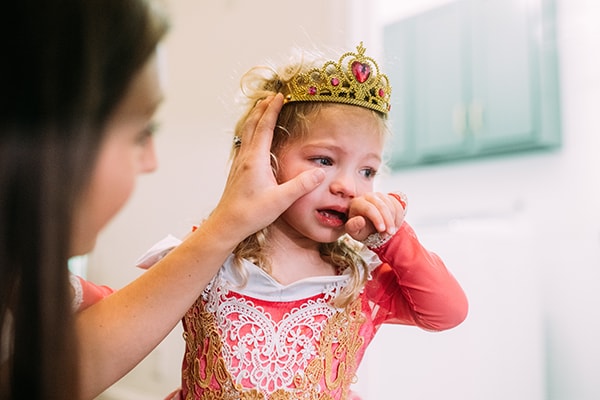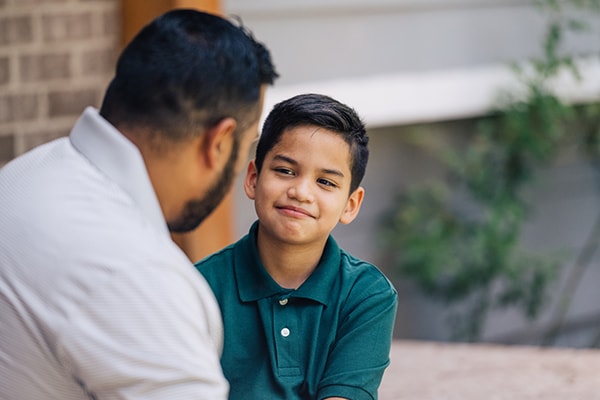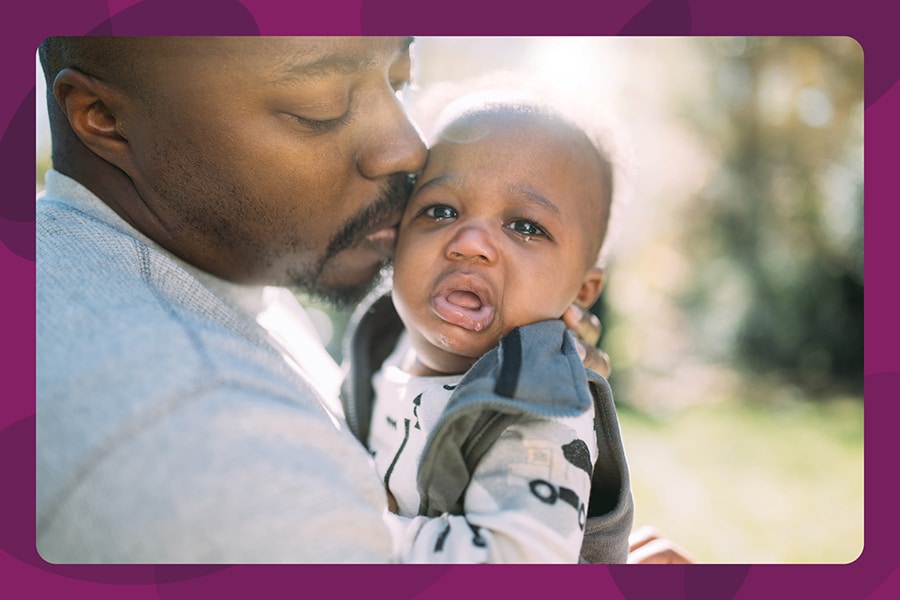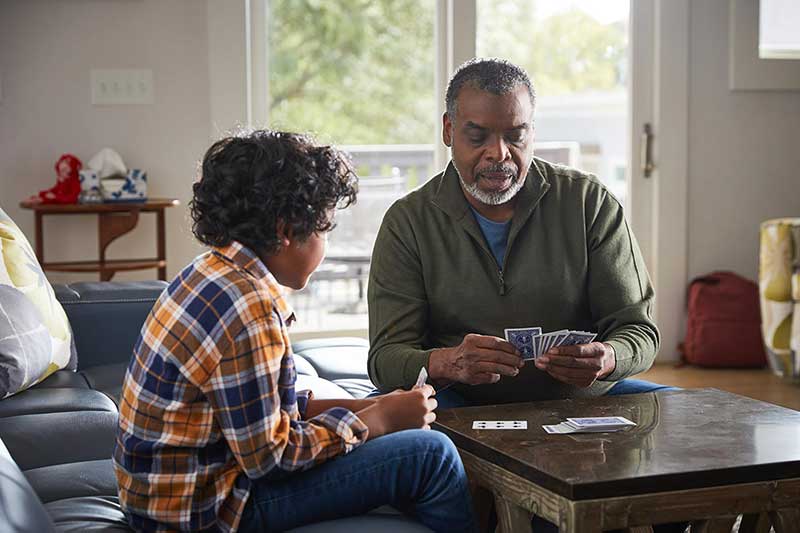Unlearning What We Were Taught About Feelings

What messages did you hear about feelings growing up? Maybe you remember phrases like, “Shake it off,” “It’s not a big deal,” or “You’re OK. Don't cry!” Even though these words likely came from a place of love and care, they probably didn’t make you feel any better. In fact, messages like these actually dismiss and minimize kids’ feelings, leaving them feeling worse and leading to bottling up feelings.
It’s only natural to repeat what we heard as kids, so if your feelings were dismissed when you were young, you may find yourself saying these same phrases to your own kids. But with intentional effort, we can show kids that all of their feelings matter and that we’re here to help them work through whatever they’re feeling. We can teach them how to regulate their emotions in healthy ways, even if we never learned how as kids.
It’s important to recognize that many adults are simply passing down the lessons they learned growing up. If they weren’t taught effective healthy emotional regulation skills themselves, they may not know any other way. The good news? Breaking generational cycles of bottling up feelings is possible. Anyone, at any age, can learn to regulate their emotions in healthy ways.
In this article:
How bottling up feelings in childhood can show up in parenting
Emotional regulation is the ability to manage emotions in healthy ways. This means recognizing, labeling and expressing emotions and then using strategies to cope with them. But we’re not born knowing how to emotionally regulate. Instead, we learn from trusted adults. When parents and caregivers interact with kids in safe, stable, nurturing ways, they’re laying the foundation for a child’s development—including how they learn to regulate their emotions.
But unintentionally minimizing or dismissing kids’ feelings by saying things like, “Shake it off,” “It’s not a big deal,” or “Don't cry” may lead them to unhelpful beliefs about feelings, like:
- My feelings can be stopped, prevented or ignored.
- I should keep certain feelings to myself.
- It’s not OK to cry, especially around others.
Those bottled-up feelings will come to the surface one way or another—and often not in a way, time or place that’s helpful. That’s why it’s critical that parents and caregivers make it clear that it’s OK for kids to feel whatever they feel and express it openly.
How to examine our own beliefs about emotions
The first step in helping kids learn to regulate their emotions is to take a closer look at our own beliefs about feelings. By understanding what we believe, and how our beliefs shape our reactions and relationships with our kids, we can parent with even more intention and compassion.
The questions below can help you get started. Try exploring them through journaling, drawing or meditation or talking through them with trusted friends or family members.
Reflection questions
- When you were growing up, were there certain emotions you felt safe to express and others you felt you had to hide?
- As a child, how did the adults in your life respond to your emotions? If their responses weren’t helpful, what would you have wanted them to say or do instead?
- In what ways do you think those experiences shaped your current beliefs about emotions?
- As a parent or caregiver now, how do those beliefs influence the way you respond when your child is struggling with their own big feelings?
This kind of self-reflection is hard work. It’s not easy to acknowledge the patterns we learned growing up. If you need more support along the way, consider reaching out to a mental health professional.
Through it all, be gentle with yourself. Show yourself compassion, allow yourself to fully feel your emotions, and give yourself permission to practice self-care—not because it benefits your parenting (though that’s a wonderful bonus), but because you deserve care simply for being you.

How to lay a healthy emotional foundation for kids
Once you’ve explored your own beliefs about feelings, the next step is to teach and model healthy beliefs about emotions for your child. Explain to your child (and remind yourself of) these simple truths about feelings:
- We all have feelings.
- All feelings are OK and normal. They’re not good or bad, positive or negative. They just are.
- Feelings are temporary and can change from moment to moment.
- We can feel more than one feeling at a time.
- It’s OK (and helpful!) to talk about feelings.
And when your child is struggling to regulate their emotions in the moment, try to avoid shutting them down. Instead, pause, take a deep breath, and regulate your own emotions first. Then focus on listening, normalizing and validating their feelings, and offering support. Keep in mind that validating kids’ emotions doesn’t mean we always agree with them. But it does let them know that we hear them and that we care.
| Instead of saying... | Try saying... |
|---|---|
“Shake it off” when your child is disappointed after missing a soccer goal. |
“It makes sense that you’re disappointed. It’s normal to feel that way.” |
“It’s not a big deal” when your child is nervous about presenting to their class. |
“I understand why you’re nervous. A lot of people feel nervous about public speaking. Want to practice presenting to me?” |
“You’re OK! Don’t cry” when your toddler falls and starts to cry. |
“That must have felt scary when you fell. Do you need a hug?” |
These small shifts teach kids that their feelings are normal, safe to share and temporary. Ultimately, when we stop trying to fix or minimize their emotions and instead listen, validate and support them, we show our kids how to work through their feelings in healthy ways.
Reflecting on our beliefs about emotions, and actively laying a healthy emotional foundation for our kids, is hard work. Breaking generational cycles of bottling up feelings takes time, patience and intentional effort. You won’t always get it right, and that’s OK. What matters are the small, everyday moments. Each time you pause before reacting, validate an emotion instead of dismissing it or gently correct yourself after a misstep, you’re changing the course for your whole family.
By becoming aware of unhelpful messages and intentionally choosing validation and support, you’re laying a healthy emotional foundation for your child for life. Parenting with intention and compassion not only helps your child learn to regulate their emotions but also helps you break the cycle for future generations.



